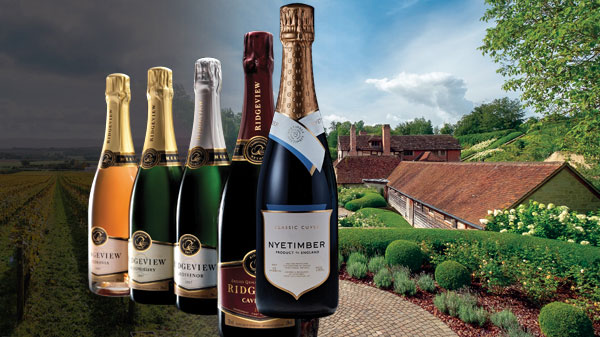
Great Bruttania: Can British sparkling wine out-champion champagne?
Champagne, that most favoured of fine French sparkling wine-producing regions, has long held a monopoly when it comes to the supply of socially-acceptable bubbly beverages. In fact, until très, très récemment, any non-Gallic grape grinder bold enough to dabble in bespoke bubbly – particularly if they hailed from the wrong side of the Channel, as British sparkling wine certainly does – would have gotten notoriously short shrift.
![]()
That all changed, however, and at a very particular time – January 2010. It was that month, during the ever-prestigious World Sparkling Wine Championships in Verona, that – much to the shock of a contingent of hitherto-unbeaten champagne producers – the UK-originated Nyetimber Classic Cuvée took home the tasting tournament’s top accolade. Even more gallingly, it saw off such previous festival fizz favourites as Dom Pérignon and Louis Roederer to do so. Since then, English sparkling wines have gone from strength to strength, racking up a total of 15 Best Sparkling Wine titles.
So, what exactly has driven the British sparkling wine to becoming a true bubbly behemoth? According to the experts, it seems we have global warming to thank. As the world’s temperatures have risen, the counties of England’s southern coast – notably Kent, Sussex, Surrey and Hampshire – have become increasingly viable when it comes to the production of sparkling wines.

Addressing the effect of this climatic shift on the terroir of southern England, Eric Heerema, Chief Executive of Champenois-smiting Nyetimber, said: “The Home Counties now boast the perfect conditions for the production of sparkling wine. In particular, the cool climate encourages the slow ripening of grapes, allowing local winemakers to deliver truly delicate flavours, ones ideally-suited to the production of truly fantastic sparkling wines.
Unsurprisingly, it’s a development that has not slipped under the radar of the wider world of wine, with the huge influx of investment capital and professional expertise now pouring into the region being an apt testimony to this. Two of the most high-profile British sparkling wine producers – Woodchester Valley and Rathfinny – for instance, have both lured substantial domestic backing. Perhaps more surprisingly, two well-established French champagne houses, Taittinger and Pommery, have also seen the light. This has seen them, separately, invest in their own estates across the Channel with a view to producing a new line of English sparkling wines using traditional champagne techniques and grape varietals.

According to WineGB – the country’s national organisation for grape nurturers and winemakers – more than 2,500 hectares of English and Welsh land have now been co-opted by the wine industry. This equates to some 170 vineyards and around 160 wineries. While sparkling wine accounts for 71 percent of their collective output, there is also now a smattering of reds, whites and rosés being produced. In 2018, apparently, the UK wine output rose to a record high of 15.6 million bottles – a staggering 264 percent increase over the previous year’s frost-afflicted 5.9 million bottles.
In fact, the organisation is so sure of the sustainability of this relatively new-found industry that it is predicting that roughly 30,000 new jobs will be created over the next 20 years. On top of that, by 2040, it is forecasting that wine production will contribute as much as £658 million (HK$6.8 billion) a year to the UK GDP through a combination of domestic and international sales, as well as vineyard-led tourism.

Capturing this new-born confidence in the British sparkling wine sector, Jancis Robinson, a UK-based wine critic, said: “Gone are the days when the English wine industry was dominated by those who decided to try out viticulture in a superfluous pony paddock. The country’s vintners are now producing sparkling wines capable of challenging not just supermarket champagnes, but also the likes of Krug, Cristal and Dom Pérignon.”
While it’s still too early to pronounce on the long-term prospects of Brit bubbly, there are at least clear hopes for continued short-term success. With the results of this year’s World Sparkling Wine Championships currently being decided – and set to be announced in just two months’ time – it could well be that champagne’s previously all-conquering confidence is set for yet another knock. While that may be bad news for the ex-champions of Champenois, it could prove a rare bit of good news for Brexit-blighted Blighty.
Text: Tenzing Thondup
Photos: Nyetimber, Pommery







